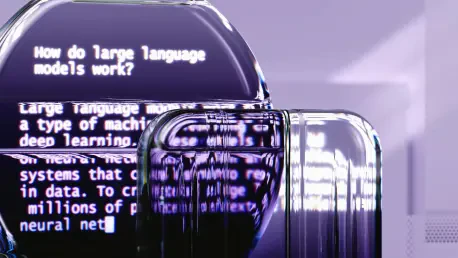Biomedical text mining is becoming an increasingly important field in China, driven by the need to analyze large volumes of medical data. Community challenges play a crucial role in this endeavor, fostering innovation and setting benchmarks for performance. These challenges bring together researchers from various disciplines, pushing the boundaries of what can be achieved with biomedical text mining.
Pioneering Contributions of CHIP
Evolution of Tasks
CHIP (Chinese Health Information Processing) has been instrumental since its inception, releasing numerous evaluation tasks annually. Initially, these tasks focused on fundamental aspects such as medical entity recognition and clinical terminology standardization, crucial for structuring and understanding vast swathes of medical text data. Over the years, the complexity of these tasks has significantly increased, reflecting the advancements in computational capabilities and the growing presence of multifaceted biomedical challenges.
The introduction of more sophisticated tasks, such as literature-based question generation and COVID-19 trend predictions, showcases this evolution. These tasks not only demand higher computational strategies but also a deeper understanding of the vast and intricate biomedical datasets. Furthermore, CHIP has expanded its data types over the years to include medication instructions and literature from traditional Chinese medicine, enhancing the robustness of text mining models by enriching their training datasets. The systematic expansion and innovation in evaluation tasks have continually pushed researchers to develop more advanced and nuanced computational techniques.
Benchmark Initiatives
In 2021, CHIP made a landmark contribution to the field through the introduction of the CBLUE benchmark, which encapsulated eight fundamental biomedical NLP tasks. This initiative has been a major step forward in standardizing evaluation processes across various tasks, setting new performance metrics for researchers to strive towards. The establishment of such a benchmark ensures consistency and comparability in measurements, enabling fair assessments of different models and approaches.
The CBLUE benchmark covers a wide range of challenges in biomedical NLP, from medical entity recognition to more sophisticated tasks such as semantic similarity and information extraction from complex medical texts. By integrating these varied tasks into a single benchmarking framework, CBLUE sets the stage for comprehensive and multifaceted evaluation. This initiative has significantly raised the bar for what constitutes state-of-the-art performance in biomedical text mining and has inspired a wave of innovations aimed at meeting these elevated standards.
Specialized Contributions from Other Organizations
CCIR and Knowledge Graphs
In 2019, CCIR (Chinese Conference on Information Retrieval) introduced a groundbreaking knowledge graph-based task, a significant stride in making data interconnections comprehensible and fostering a more integrated approach to text mining. This task involved constructing and utilizing knowledge graphs to improve medical text mining’s ability to identify relationships and patterns within data, effectively promoting a holistic comprehension of medical literature.
Knowledge graphs, with their capacity to connect disparate pieces of data, have enabled the development of more intuitive and insightful biomedical text mining applications. The CCIR’s task encouraged the community to explore innovative ways to leverage these graphs for enhanced data synthesis, aiding in more accurate and comprehensive data interpretations. By pushing for knowledge graph implementation, CCIR helped bridge gaps between isolated datasets, promoting the development of integrative tools that can navigate the complexity of biomedical data.
CSMI and Public Health
CSMI (Chinese Society for Medical Informatics) took a distinct approach in 2020 by focusing on practical applications within public health. Their challenge aimed at classifying public health questions, emphasizing the need for efficient categorization and response strategies in health communication. This task required developing models capable of processing and classifying large volumes of public health queries, a crucial capability for public health initiatives and crises management.
This focus on public health showcases the practical impact biomedical text mining can have on societal well-being. Efficient classification of health inquiries ensures that information reaches the right experts promptly, facilitating better responses and interventions. The CSMI challenge underscored the importance of utilizing biomedical text mining not just for theoretical advancements but for tangible improvements in public health services. By addressing real-world needs, CSMI highlighted the broader societal implications of advancements in this field.
Expanding Data Horizons
Diverse Data Types
The scope of data utilized in these challenges has progressively broadened over the years, an evolution that has significantly enhanced the robustness of biomedical text mining models. For instance, CHIP’s incorporation of traditional Chinese medicine literature and detailed medication instructions into their datasets represents a leap in diversity. This expansion ensures that models are not merely trained on uniform datasets but are exposed to varied, culturally specific medical data, enriching their capability to handle diverse biomedical texts effectively.
By incorporating a wide array of data types, these community challenges enable the development of more versatile and resilient models. These models are better equipped to navigate different formats and contexts of medical information, thereby broadening their applicability. The inclusion of traditional Chinese medicine literature, for example, introduces unique terminologies and healthcare practices into the datasets, ensuring that the resulting models reflect a more comprehensive understanding of global medical knowledge.
Real-World Applications
The real-world applications of tasks like COVID-19 trend predictions underscore the timeliness and relevance of these community challenges. These tasks, introduced during critical moments, demonstrate the field’s capacity to address urgent public health issues effectively. The COVID-19 trend prediction task, for instance, required the development of models capable of analyzing evolving data to forecast trends, informing stakeholders and aiding in effective decision-making and resource allocation.
These practical applications highlight the immediate impact of advancements in biomedical text mining. By focusing on urgent, real-world problems, community challenges ensure that technological innovations have direct and practical benefits. The ability to predict and analyze pandemics through text mining showcases the significance of these efforts in public health, proving that biomedical text mining is not only a tool for academic exploration but also a critical resource for societal health management.
Collaborative and Community-Driven Efforts
Shared Goals
Despite the differences in focus and frequency of tasks among organizations like CHIP, CCIR, and CSMI, these groups share a unified objective: to enhance the capabilities of biomedical text mining. This collaborative spirit propels the collective progress in the field, encouraging shared learning and innovation. By working towards common goals, these organizations promote an environment where advancements are continuously built upon previous breakthroughs, driving the field forward collectively.
The shared goals fostered by these challenges underline the interconnectedness of the research community. Tasks developed by one organization often inform and influence the initiatives of others, leading to a cohesive advancement in biomedical text mining. Collaborative studies and shared datasets exemplify how different entities contribute to a unified narrative, emphasizing collective improvement and innovation.
Impact and Innovation
Biomedical text mining is growing as a pivotal field in China, fueled by the necessity to analyze huge volumes of medical data. The role of community challenges cannot be overstated in this effort. These challenges are instrumental in fostering innovation and establishing benchmarks for performance. They serve as a nexus where researchers from various disciplines converge, pushing the limits of what can be achieved with biomedical text mining. Through collaborative efforts, these community challenges not only drive advancements in the technology but also set standards that guide future research directions. By pooling their expertise, researchers tackle complex data sets, revealing insights that can dramatically impact medical research and healthcare delivery. The interdisciplinary approach ensures that different perspectives are considered, enhancing the effectiveness and accuracy of the biomedical text mining processes. This collective endeavor is crucial as it propels the field forward, making it a cornerstone of modern medical research and innovation in China.









